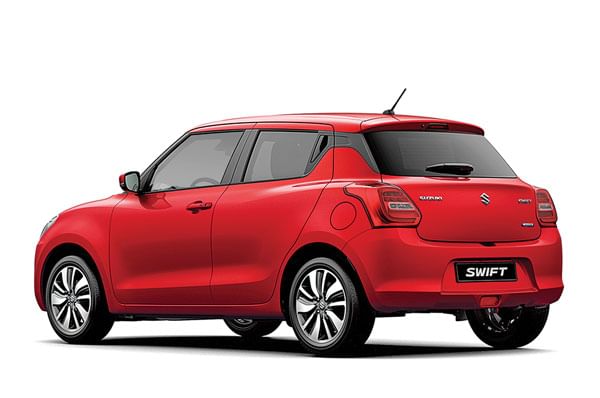Suzuki’s new third-generation Swift comes as a breath of fresh air. Revealed to much acclaim at the Geneva motor show 2017, the new car is fresh, crisp and full of exciting details that help it stand out.
The new Swift has a familiar stance, but it is also very different from its predecessor in many ways. The bonnet, headlights, and the cockpit-like tapering cabin look familiar (they are meant to), but look closer and new bits, like the protruding Jaguar F-Type-like nose, the Audi-esque grille and the blacked-out C-pillar with hidden door handles at the rear, are clearly evident. Suzuki has also used attractive 16-inch turbine blade alloy wheels to complete the package, which to Suzuki’s credit brings about an air of sophistication – a job well done.
Like the recently launched new Dzire, the 2018 Swift is also built on the same ‘Heartect’ platform as the Baleno, but with certain modifications carried out to make it stiffer in key areas (where it uses more high-strength steel). This, as with the Baleno, means the car is extremely light, with kerb weight starting at a mere 890kg.
Codenamed YSD, the new car is also marginally shorter in height than the one it replaces; the roofline is slightly lower and that is why it looks quite compact in the flesh. The new Swift, however, is built on a longer 2,450mm wheelbase. This is done for two reasons. First, a longer wheelbase means more space on the inside. Also, pushing the wheels out helps give the car greater stability. Suzuki’s engineers say that this is because, first and foremost, the Swift has been engineered to be fun to drive. “We have expended every possible effort to sharpen the car’s handling. We’ve used wider axle tracks, a lower driver’s hip point and a lower centre of gravity to this end.” Suzuki engineers have also worked hard on improving steering arm location, a lot of work has also gone into the calibration of the electric power steering, and the car’s springs and dampers will also have a setup similar to the Baleno RS rather than the standard Baleno.

The longer wheelbase also means cabin space is up 25 percent and luggage space has grown from 200 litres to 254 litres. The front of the cabin has a similar amount of room as the current car, but get into the rear and the space on offer is a lot more. There’s more legroom, the seatback feels more supportive and there’s a fair amount of thigh support as well. And with larger rear doors, ingress and egress has become easier too. According to Suzuki, this is because there is no two-door Swift now, so it has been able to concentrate on packaging it without compromising on the longer front doors.










































